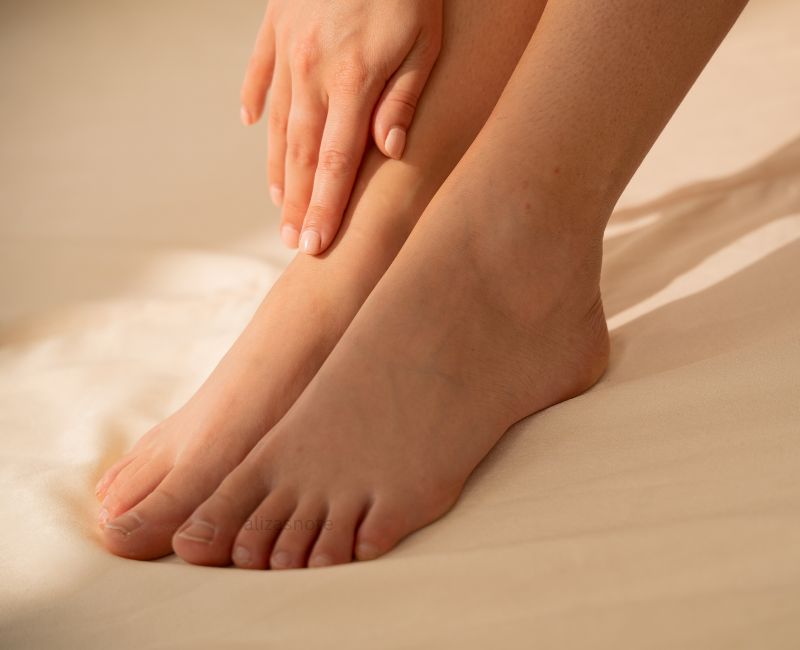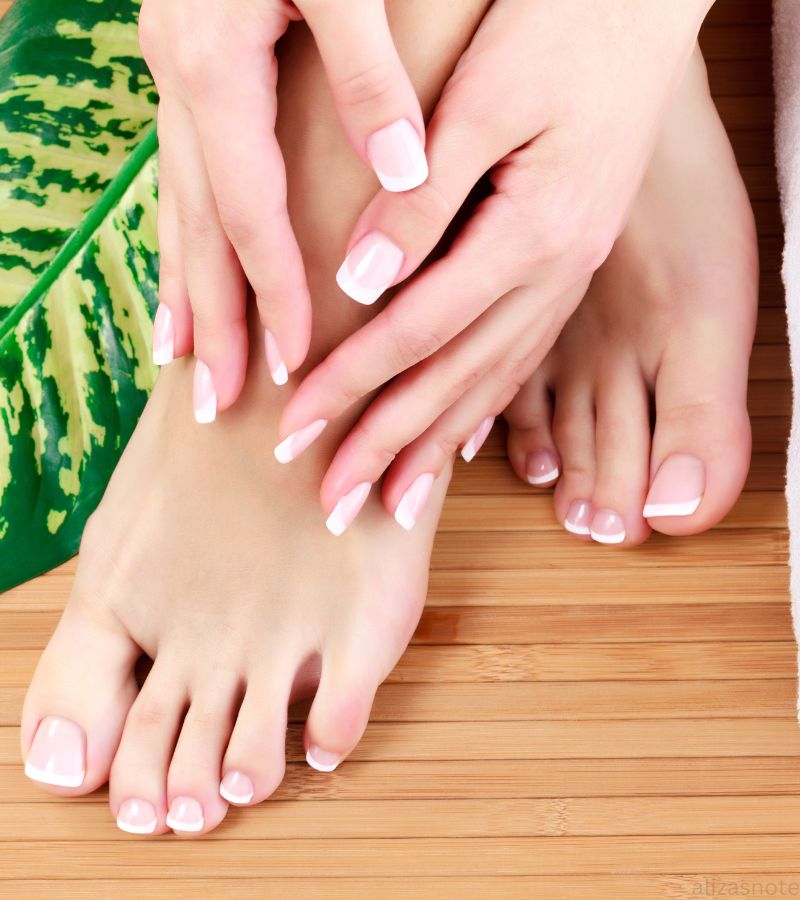As we grow older, taking care of our feet becomes more crucial than ever. Our feet are the cornerstone of our mobility, significantly impacting our overall health and quality of life.
Over the years, our feet face various challenges, from everyday wear and tear to chronic conditions like arthritis and diabetes.
By recognizing these changes and taking proactive steps, we can ensure our feet stay healthy and functional.
This blog will provide practical tips and expert advice on how to keep feet healthy as you age.
We’ll cover everything from selecting the right footwear to practicing proper hygiene and seeking timely medical care.
Join us as we explore the secrets to lifelong foot health and discover how to keep your feet strong and pain-free.

Common Foot Changes with Age:-
As we age, our bodies experience various changes, and our feet are no different. Here are some common foot changes that occur with age:
1. Thinning Skin and Fat Pads
One noticeable change in aging feet is the thinning of the skin and the fat pads on the soles. The skin loses its elasticity and becomes more delicate, making it susceptible to cuts, blisters, and other injuries. The fat pads that cushion the bottoms of our feet also diminish, reducing natural shock absorption and increasing the risk of pain and discomfort, especially when walking or standing for extended periods.
2. Reduced Blood Circulation
Circulation often decreases as we age, significantly impacting our feet. Poor blood flow can lead to various issues, from cold feet and slower wound healing to more severe conditions like peripheral artery disease (PAD). Ensuring good circulation through regular exercise, proper hydration, and avoiding smoking is crucial for keeping your feet healthy.
3. Changes in Bone Structure and Joint Flexibility
The bones and joints in our feet can undergo structural changes over time. Conditions like arthritis become more common, leading to joint pain, stiffness, and reduced flexibility. Additionally, the arches of the feet can flatten, altering gait and increasing the risk of developing conditions like plantar fasciitis. Maintaining joint flexibility through regular exercise and stretching can help manage these changes and reduce discomfort.
4. Decreased Muscle Strength
The muscles in our feet and ankles can weaken with age, affecting balance and stability. Incorporating strength training exercises for the lower legs and feet can help maintain muscle mass and support overall foot health.
Common Foot Problems:-
With these changes, older adults often experience specific foot problems more frequently. These include:
- Arthritis: Joint inflammation that causes pain and stiffness.
- Bunions and Hammertoes: Deformities of the toes resulting from structural changes and ill-fitting shoes.
- Corns and Calluses: Thickened areas of skin that develop from repeated friction and pressure.
- Plantar Fasciitis: Bothering of the band of tissue that runs along the lower part of the foot.
- Toenail Disorders: Conditions such as fungal infections, ingrown toenails, and thickened nails.
By paying attention to your feet and addressing changes promptly, you can ensure they remain strong and pain-free, supporting your mobility and overall well-being.
How To Keep Feet Healthy As You Age:-

As we age, maintaining healthy feet becomes increasingly important for our mobility and overall well-being. Here are some essential tips to keep your feet in great shape:
1. Daily Foot Care Practices
- Daily Washing: Clean your feet every day using warm water and mild soap. Make a point to dry them completely, particularly between your toes, to forestall contagious diseases.
- Moisturizing: Apply a quality moisturizer to keep your skin soft and prevent dryness and cracking. Be careful not to apply moisturizer between your toes to avoid fungal infections.
- Toenail Care: Trim your toenails straight across and file the edges to prevent ingrown toenails. Avoid cutting them too short.
2. Choosing the Right Footwear
- Well-Fitting Shoes: Guarantee your shoes fit well and deal adequate help. Look for shoes with a wide toe box, good arch support, and cushioning. Avoid high heels and shoes with pointed toes.
- Appropriate Footwear: Choose shoes that are suitable for the activities you’re doing Wear strong athletic shoes for practice and agreeable, tough shoes for day to day undertakings.
- Replacing Worn Shoes: Regularly check the condition of your shoes and replace them when they show significant wear to maintain proper support and cushioning.
3. Foot Exercises
- Strengthening Exercises: Strengthen the muscles in your feet and ankles with exercises like toe curls, heel raises, and picking up small objects with your toes.
- Flexibility Exercises: Stretch your feet and ankles regularly to maintain flexibility. Attempt calf stretches and Achilles ligament extends.
- Balance Exercises: Improve your balance with exercises such as standing on one foot and walking heel-to-toe. Great equilibrium can assist with forestalling falls and wounds.
Seeking Professional Foot Care:-
1. When to See a Podiatrist
- Persistent Pain: Consult a podiatrist if you experience persistent foot pain, swelling, or any abnormal changes.
- Foot Deformities: Seek professional help for conditions like bunions, hammertoes, or severe arthritis.
- Diabetic Foot Care: If you have diabetes, regular visits to a podiatrist are essential to monitor and manage foot health.
2. Treatments and Interventions
- Orthotics: Custom-made orthotic devices can provide additional support and alleviate pain.
- Physical Therapy: Physical therapy can help improve mobility and strength in your feet.
- Surgical Options: In severe cases, surgery may be necessary to correct deformities or relieve pain.
Foot-Friendly Habits:-
1. Proper Footwear
- Supportive Shoes: Wear shoes that provide good arch support, cushioning, and a wide toe box. Stay away from high heels and shoes that are excessively close, as they can cause disfigurements and uneasiness..
- Activity-Appropriate Shoes: Choose shoes designed for the specific activity you’re engaging in. For example, wear athletic shoes for exercise and sturdy, comfortable shoes for daily tasks.
- Shoe Rotation: Rotate your shoes regularly to give them time to air out and maintain their shape. This helps prevent foot odor and extends the life of your shoes.
2. Foot Care Routine
- Daily Inspection: Check your feet daily for any signs of cuts, blisters, or infections. Early detection and treatment can prevent minor issues from becoming serious problems.
- Moisturizing: Apply a good moisturizer to keep your feet soft and prevent dryness and cracking. Do whatever it takes not to apply it between the toes to reduce the bet of infectious illnesses.
- Toenail Care: Trim your toenails straight across and file the edges to prevent ingrown toenails. Keep them at a moderate length to avoid discomfort.
Professional Foot Care:-
1. Regular Check-Ups
- Podiatrist Visits: Schedule regular visits to a podiatrist, especially if you have conditions like diabetes or arthritis. Proficient check-ups can help recognize and resolve issues early.
- Foot Screenings: Undergo regular foot screenings, especially if you have diabetes or other conditions that affect foot health. Early intervention can prevent complications.
2. Treatments and Interventions
- Orthotics: Use custom-made orthotic devices if recommended by your podiatrist. Orthotics can provide additional support, correct foot alignment, and alleviate pain.
- Physical Therapy: Engage in physical therapy to improve mobility and strength in your feet. A therapist can provide personalized exercises and treatments to enhance foot health.
- Surgical Options: In severe cases, surgery may be necessary to correct deformities or relieve pain. Consult your podiatrist to explore surgical options if needed.
Prioritize foot care, stay active, and seek professional help when necessary to ensure your feet continue to support your active lifestyle.
FAQs:
Q. How do i keep my feet healthy as i age?
Practice good foot hygiene, wear supportive footwear, do regular foot exercises, and have routine check-ups with a podiatrist.
Q. What foot problems are common in older adults?
Older adults commonly experience arthritis, bunions, hammertoes, corns, calluses, plantar fasciitis, and toenail issues like fungal infections and ingrown toenails.
Q. How can I prevent foot pain?
Prevent foot pain by wearing well-fitting shoes with good arch support, avoiding high heels, maintaining a healthy weight, and doing strengthening and stretching exercises for your feet and ankles.
Q. When should I consult a podiatrist?
Consult a podiatrist if you have persistent foot pain, swelling, signs of infection, or if you have diabetes and notice any changes in your feet.
Q. What exercises are beneficial for foot health?
Exercises like toe curls, heel raises, and calf stretches help maintain muscle strength and flexibility. Balance exercises, such as standing on one foot, can also enhance stability.
Last Call:
- How To Keep Feet Healthy As You Age? As you age, maintaining foot health is crucial for staying mobile, independent, and enjoying a high quality of life.
- By practicing proper foot hygiene, wearing supportive shoes, doing regular exercises, and seeking professional care, you can keep your feet in great condition.
- Your feet are the foundation of your mobility, and taking care of them can prevent many common issues, helping you stay active and pain-free.
- Take the necessary steps to care for your feet, and they will support you in leading an active, healthy, and fulfilling life.
Call to action:
- Adopting healthy foot care habits today can ensure you stay active, mobile, and pain-free in the future.
- Make a commitment to your foot health by making small, consistent changes to your daily routine. Tag us on pinterest your feets and lets enjoy the beauty together.
- Your future self will thank you!


